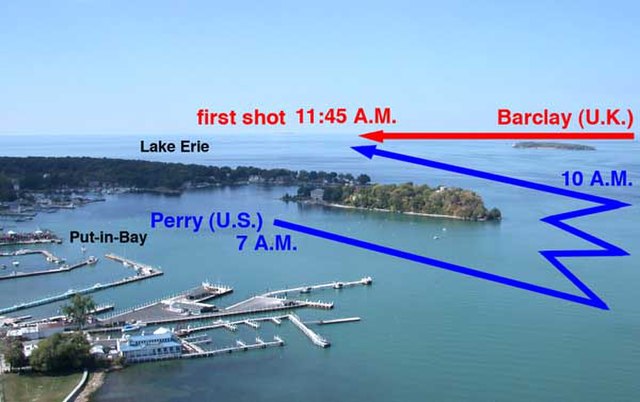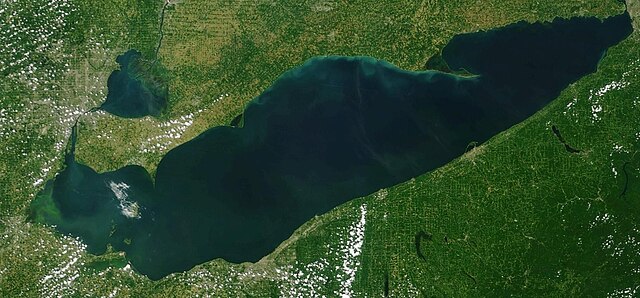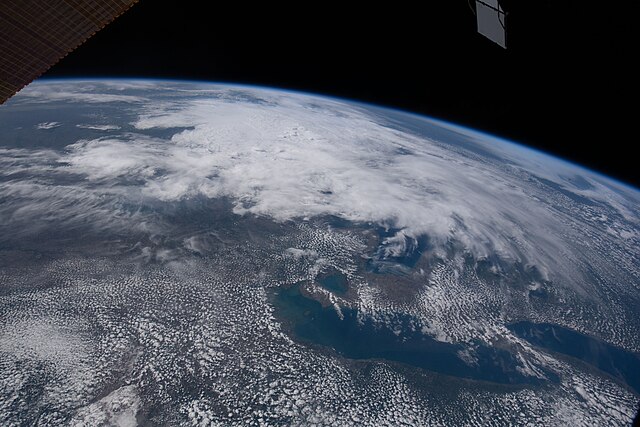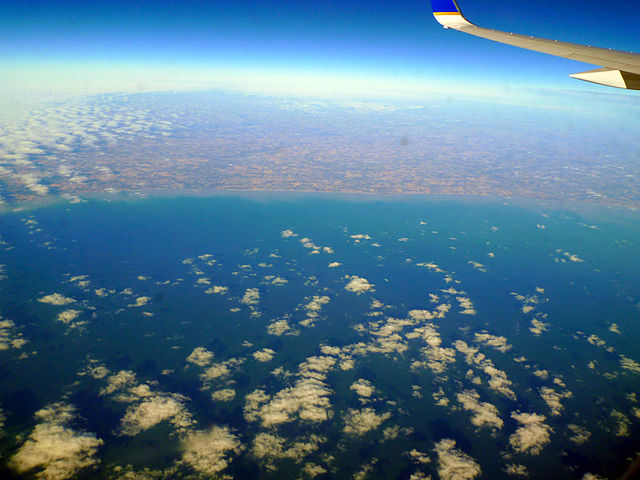The Battle of Lake Erie, also known as the Battle of Put-in-Bay, was fought on 10 September 1813, on Lake Erie off the shore of Ohio during the War of 1812. Nine vessels of the United States Navy defeated and captured six vessels of the British Royal Navy. This ensured American control of the lake for the rest of the war, which in turn allowed the Americans to recover Detroit and win the Battle of the Thames to break the Indian confederation of Tecumseh. It was one of the largest naval battles of the War of 1812.
Battle of Lake Erie by William Henry Powell, painted 1865, shows Oliver Hazard Perry transferring from Lawrence to Niagara
Movements of the squadrons of Perry and Barclay on the morning of 10 September overlaid on contemporary photograph (image taken September 2004)
Perry and Cyrus Tiffany rowing to the Niagara
Lake Erie is the fourth-largest lake by surface area of the five Great Lakes in North America and the eleventh-largest globally. It is the southernmost, shallowest, and smallest by volume of the Great Lakes and also has the shortest average water residence time. At its deepest point Lake Erie is 210 feet (64 m) deep, making it the only Great Lake whose deepest point is above sea level.
NOAA satellite image of Lake Erie from July 7, 2023. Light green swirls are algae bloom on the western edge of the lake.
Lake Erie on May 28, 2022, taken from the International Space Station
North shore in mid-December 2014
Walk in Water, built in Buffalo, was the first steamship on Lake Erie. Picture c. 1816.







